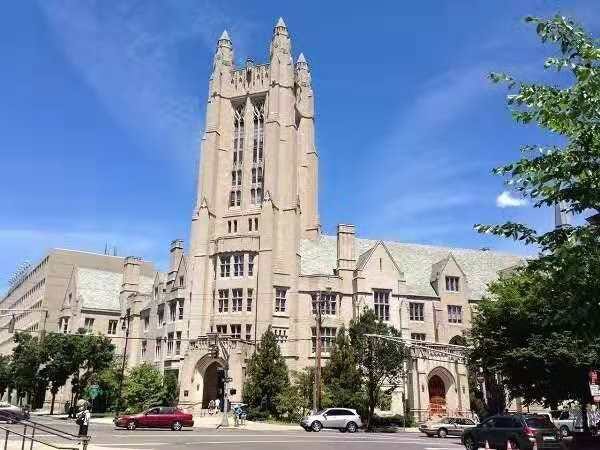Can Asian Americans Win the Real Fight for more Educational Resources?
Expanding opportunity requires targeting our political energy beyond a zero-sum strategy and affirmative action

By Steven Chen, Founding Partner, crwstrategy.com
Since 2012, from California to New York, from Berkeley to Boston, many first-generation immigrants from mainland China have joined the fight against race-based affirmative action in hopes of obtaining more education resources. Can we really win the fight for more education resources that way?
I, too, am an immigrant from mainland China. When people first see me, they think they know me. It is true that I am a “typical” Chinese immigrant in many respects. I arrived here from China thirty years ago to pursue a graduate degree. I am a technology specialist who lives in a Los Angeles suburb. Many assume they know me and my values. But they do not. Few would know that I am an environmentalist and that I help clean our local beach every month along with my fellow Chinese Americans. Many would believe that I care deeply about the education of my own children, because they see my face and assume that I am a “Tiger parent” devoted to ensuring my children have the best education. They are right about this, but they also don’t see all of me. I do not only care about the education of my own children. For years now, I have been working in the Chinese immigrant community and with leading Asian American organizations to expand access to quality education for not only the children of Asian Americans, but for all children. This, I believe, should be a fundamental goal for all of us.
How Asian Americans won the fight for education resources in the past?
Because education plays such an important role in individual success, educational resources have been closely guarded by dominant groups. Throughout the history of this country, disadvantaged groups have had to fight for their share of education resources.
As a result of the fight by disadvantaged groups and the implementation of affirmative action policies in the 1960’s, the country witnessed a dramatic increase of women and racial minorities in higher education. Asian Americans were big winners of this fight. However, Asian Americans didn’t win this fight alone. More importantly, this fight was not fought in a zero-sum way. The increase of women and racial minority students was accompanied by an increase of all students, including white American students.
What is limiting Asian Americans from increasing their shares in top colleges today?
Fast forward to the 1990’s, when Asian Americans were already “over represented” in many top colleges. Some began to assume that race-based affirmative action hurts Asian Americans. The argument is that if a college makes efforts to recruit students from underrepresented racial groups, those admissions will come at the expense of Asian American students. The flip-side of this faulty logic is that if race-based affirmative action is banned, the share of Asian Americans in colleges will increase dramatically.
However, the reality does not match with this argument. After affirmative action in public colleges was banned in California as the result of a statewide ballot vote in 1996, the percentage of Asian Americans in the University of California campuses remained flat. At the same time, elite private colleges nationwide have maintained race-conscious policies and seen the percentage of Asian American students keep rising. The most significant rise in Asian American admissions at Harvard occurred after the Obama administration issued guidance on how to apply affirmative action in the U.S. education system.
How do we explain this? College admissions are complicated.
The academic rating (via standardized test scores and high school grades) is one of the strongest areas for most Asian American applicants as a whole. However, academic achievement is only one of the criteria highly-selective colleges consider. Top colleges are looking for a variety of talents, including leadership, special skills, and the unique application of passion in their recruits. Asian American applicants look more like other groups when it comes to these talents, and so they do not reap the same rewards when a variety of talents are recognized, compared with academic scores alone. There is no formula based on academic scores for getting in top colleges. However, the fact that Asian Americans are three to four times “over represented” relative to their proportions in the population in many top colleges suggests that Asian American applicants are not just test-takers. They are excellent in many other areas too.
The drive for racial diversity is another factor preventing one or two racial groups from monopolizing enrollment at highly-selective colleges. In a multiethnic country, many institutions, such as top colleges, value racial diversity. They want diverse representation in their institutions to attract the best talents and ideas from all people. Diversity is one of the major reasons highly-selective colleges are able to stay on top. Elite colleges also have the responsibility to produce leaders of all racial backgrounds. If race-conscious admissions are outlawed, colleges will most likely not abandon their efforts to foster racial diversity. After affirmative action was banned in California, public universities in California instituted plans such as the “Eligibility in the Local Context (ELC)” criteria to try to improve racial diversity. Recently, some top colleges around the country ended SAT/ACT tests scores as part of their application requirements. Many people believe that these changes are meant to provide more flexibility in maintaining racial diversity.
Race-based affirmative action is intended to increase diversity through the recruitment of qualified applicants from underrepresented racial groups, not to penalize overrepresented racial groups. So, the existence of race-based affirmative action is important to seriously underrepresented racial groups, including some Asian American subgroups, while the negative impact to overrepresented racial groups, such as Chinese Americans should be minimal. This is especially true given the fact that the Supreme Court has ruled that race-based affirmative action can only be used in a very limited way. Quotas and bonus points based on race are not allowed.
Racial discrimination and stereotyping against Asian Americans do exist in this country, especially after we graduate from colleges and enter the real world. We need race-based affirmative action to fight racial discrimination against Asian Americans in college and beyond.
How can Asian Americans win the real fight for more education resources?
America is still far away from an ideal colorblind society. Different racial groups will fight for educational resources. Universities, especially top universities, will strive for racial diversity as long as racial inequalities exist. Today, Asian Americans are flourishing in the U.S. education system.
Given this context, how can Asian Americans win the fight for more education resources?
The battle against reinstating affirmative action in California’s public universities in 2012 and the fight against New York City’s effort to increase diversity at elite public high schools this year can be viewed as some Asian Americans trying to defend their claims on education resources. The complaints filed against elite colleges might be seen as offensive battles by some Asian Americans trying to expand their already high shares at elite colleges. Those battles, defensive or offensive, are zero-sum battles because they include no real effort to expand educational opportunity for all.
After six years of fighting over race-conscious admissions, there is no meaningful increase in the share of Asian Americans in selective institutions. Why? There is just not much room left for Asian Americans to gain when resources are not expanding.
Over the past 30 years, an infusion of well-educated immigrants from Asian countries has flowed into the U.S. They have helped America build a world-class high-tech industry. They contribute taxes and enhance the communities in which they live. Since quality education led to their success, they want the same for their children. This creates an extraordinary demand for excellent educational opportunities. Unfortunately, this higher demand is not adequately met. This is the root cause of the problem we see today.
To meet this higher demand for quality education, Asian Americans should push for more public and private investment in high education.
After the financial crisis in 2008, the state of California reduced funding for higher education. Due to dramatic budget cuts, many University of California campuses had to admit more out-of-state and international students who could pay full tuition to meet costs. That had a huge impact on in-state applicants, including growing number of Asian Americans, in California. It explains why the battle for and against a proposal to reinstate race-conscious admissions in 2012 was so fierce. Other states have similar issues, too. We Asian Americans should lead the campaign to demand that lawmakers provide more funding for higher education so that children of all racial backgrounds can access a quality education and thrive.
Growing numbers of highly qualified applicants, including Asian American students, also increased competition at the nation’s elite private colleges. Students of all racial backgrounds have to work extremely hard to gain a coveted admission slot at highly-selective colleges. The admission rate at some of these institutions is as low as 5%. We should urge elite colleges to fulfill their educational missions by investing in the infrastructure and resources necessary to increase capacity and the numbers of students of all racial backgrounds they enroll, rather than fighting legal battles over the status quo.
Last, there are many “Asian American Native American Pacific Islander Serving Institutions” in the United States. Institutions with this designation are included within federally designated Minority Serving Institution (MSI) programs, which serve low-income students of our communities. Asian Americans should show full support to those institutions. We should also seriously consider building and leading Asian-American-serving flagship colleges, similar to those established by other groups in the past. These colleges will attract top talents from all racial backgrounds.
We can truly win the fight for more education resources if we turn our growing political and economic power to expanding educational opportunities for our children and the children of others.
I would like to end this essay with a positive note to my fellow Asian American parents.
While not perfect, the U.S. maintains its leadership in higher education. Asian Americans are doing well in the U.S. education system. We demonstrate soaring rates of educational attainment, even in the current context of limited resources. Colleges love our children. In my Chinese American circle, almost all of our children attended excellent colleges. My own children have had incredible educational opportunities at highly-ranked colleges, too. For this, we are grateful.
There are challenges ahead. However, I am sure Asian Americans can and will work with others to win over more education resources for our children and the children of others.



1 评论
添加您的 →[…] + […]